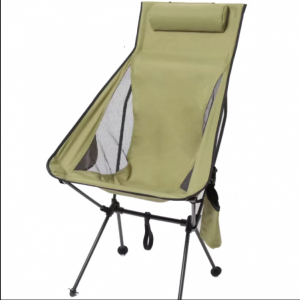News Center+ 查看更多
News Center
+ 查看更多
Reclining Through Time: The Development of the Portable Camping Chair+ 查看更多
Reclining Through Time: The Development of the Portable Camping Chair
+ 查看更多
Date:2024-04-04
Imagine a fireside without chairs, a campsite without a place to rest your bones after a day of adventure. This was once the reality for outdoor enthusiasts until the portable camping chair transformed our engagement with the wilderness. The story of this humble piece of furniture is not merely one of convenience but a narrative rich with innovation, design evolution, and cultural significance.
From Stumps to Stools: Early Seating Solutions
The earliest campers had limited options when it came to sitting down. Logs, stumps, or the ground itself were the go-to choices. However, portability became a prime concern as people started seeking comfort alongside mobility. Enter the tripod stool, a simple yet revolutionary design that can be traced back to ancient civilizations. Often made from wood and animal hide, these stools could be easily carried and set up, though they provided minimal comfort.
The Military's March: Standardizing the Foldable Seat
Much like the sleeping bag, the military played an essential role in the development of portable seating. To facilitate quick movement and efficient campsites, foldable canvas chairs were introduced. These early models of the modern camping chair were designed for functionality over comfort, with materials chosen for durability and ease of transport rather than leisurely lounging.
The Great Outdoors: Camping's Post-War Boom
After World War II, recreational camping experienced a surge in popularity. Families and individuals alike sought to reconnect with nature and experience the freedom of the outdoors. It was during this time that the portable camping chair began its transition into consumer markets. The classic aluminum-framed, nylon-webbed lawn chair became synonymous with suburban relaxation and outdoor recreation.
Innovation in Relaxation: Ergonomics Meets Portability
As camping evolved into a mainstream pastime, so too did the demand for more comfortable and ergonomic portable chairs. The 1980s and 1990s saw the introduction of chairs designed with larger seats, armrests, and even cup holders—features that catered to a growing desire for home-like comfort in the wilderness.
An outstanding example of ergonomic design in a portable format is the nbalps ComfortLite Chair. With its padded seating, adjustable backrest, and lightweight frame, it epitomizes the balance between luxury and practicality that modern campers have come to expect. The inclusion of features such as collapsible drink trays and integrated pockets further illustrates how far portable camping chairs have come in terms of user-centric design.
Materials Matter: The Quest for Lightweight Durability
In recent years, there has been a significant shift in the materials used to construct portable camping chairs. Aluminium and steel alloy frames have replaced heavier metals, while rip-stop fabrics provide both comfort and resilience against the elements. Today's chairs are not only light enough to carry on a backpack but also strong enough to withstand the rigours of outdoor life.
Sustainability Takes a Seat
As awareness of environmental impact grows, the camping industry, including portable chair manufacturers, is adopting sustainable practices. Brands are exploring recycled materials and eco-friendly production processes to ensure that the comfort we enjoy today does not come at the expense of tomorrow's natural landscapes.
A Legacy of Leisure
From the primitive tripod stool to the feature-packed recliners of today, the portable camping chair has seen a remarkable journey. Its development mirrors our own relationship with nature—one that has grown from survivalist necessity to a cherished form of leisure and relaxation. As technology continues to advance and environmental considerations become increasingly central, the future of the portable camping chair looks to be as dynamic as its past.
We've come a long way since sitting on the cold, hard ground, and as we unfold our chairs under the canopy of stars, it's clear that while our love for nature endures, our expectations of comfort continue to rise.

